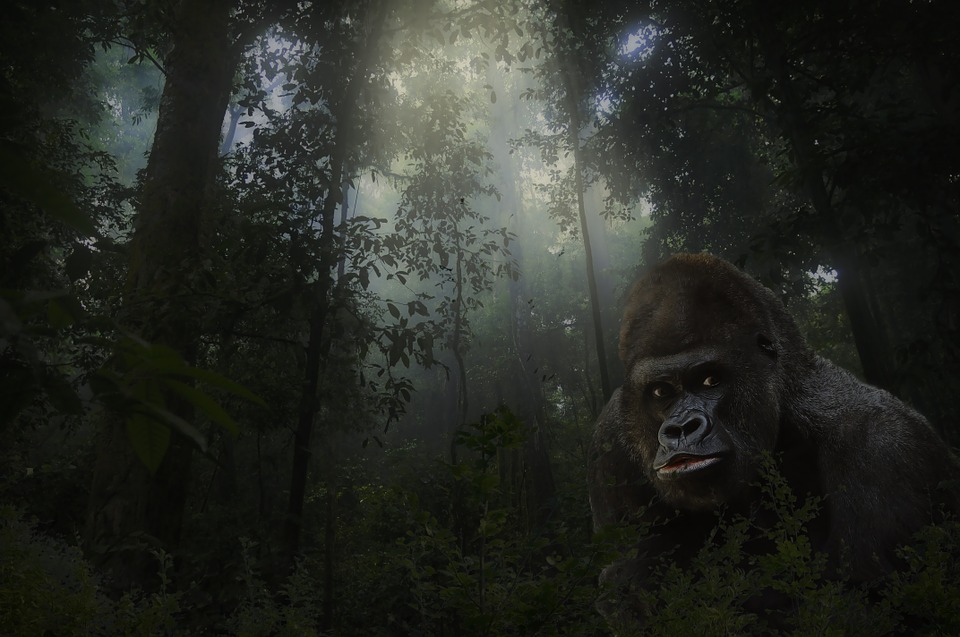“Endangered animals are innocent sufferers who are in danger because of humans.”
Endangered animals are those species that might become extinct in the near future, mostly as a result of human activities. Today, we will take you to meet some of the most endangered animals in the world.
Mountain Gorillas

Mountain gorillas belong to one of two subspecies of eastern gorillas, divided into two geographic populations: the ones who live in the Virunga Mountains, a chain of volcanoes along the border of the Democratic Republic of Congo, and another that live in Uganda’s Bwindi Impenetrable National Park. Mountain gorillas were discovered in 1902 and according to some studies, they are the descendants of ancestral monkeys and apes from Africa and Arabia which arose during the Oligocene era.
The dark fur of the mountain gorillas is often thicker and longer other gorilla species, enabling them to survive in habitats with freezing temperatures. They also tend to be larger than other gorillas but have shorter arms. For instance, male gorillas can weigh up to 195 kg, while females usually measure 100 kilograms. With their curved fingers, mountain gorillas can easily climb trees that support their weight and they are also capable of running up to six metres. While observing captive mountain gorillas, it was noted that they have significant intelligence and can even learn basic human sign language.
However, the mountain gorillas have gone through so many threats that by the end of the 20th century, it was believed that the species might become extinct. Below you will find the reasons why mountain gorillas are listed as endangered by the International Union for Conservation of Nature (IUCN):
- Habitat loss is a primary threat. Human activities such as agriculture, illegal mining, and deforestation for charcoal production have destroyed the natural habitats of these gorillas.
- Climate change is another factor has contributed to the near disappearance of these animals.
- These animals are often affected by human diseases.
- Some of these animals get caught in snares that were laid out for other animals.
- Human presence has forced gorillas to live higher up in the mountains where they are forced to endure potentially deadly situations.
- They were also illegally poached for their meat
- Previous wars have also affected these animals negatively.
Today, only approximately 1,063 mountain gorillas are left in the whole world.
Blue Whale

Whether your interest in whales is a result of the well-known movie “In the Heart of the Sea” or Herman Melville’s Moby Dick, blue whales are the world’s largest animals.
Blue whales are marine mammals belonging to the baleen whale family, which usually have long and slender-shaped bodies. They have a blue-grey mottling pattern which tend to appear as light blue underwater. One blue whale can usually weight up to 200 tons which is equivalent to approximatively 30 elephants. Another peculiar aspect of the blue whale is that it has a heart the size of a Volkswagen Beetle.
Moreover, blue whales are known as the loudest animals on the planet as they can be louder than jet engines. For instance, a jet engine can emit noise up to 140 decibels while a whale’s call can reach up to 188 decibels. It is said that they use their low-frequency whistles to call other blue whales and these whistles can be heard even from thousands of miles.
Scientists have discovered some subspecies of blue whales which are shown below:
- The northern subspecies, B. m. Musculus – They can be found in the North Pacific and North Atlantic.
- The Antarctic subspecies, B. m. Intermedia – During the austral summer, they are mostly found in the south of the Antarctic Convergence Zone. However, during the austral winter, they can move to the oceans that are near the equator.
- The pygmy subspecies, B. m. Brevicauda – These species live in the waters of Indonesia, Australia, Madagascar, and New Zealand.
- The Northern Indian Ocean subspecies, B. m. Indica – They live in the coasts of southern coasts of India, Arabia, Sri Lanka and the Maldives.
Despite being the largest animals to ever live on earth, the blue whales were categorised as endangered animals under the Endangered Species Act. These species were negatively impacted by different threats such as:
- Vessel Strikes: A vessel strike is a sort of collision between a boat and a marine animal. It is viewed that many vessel strikes have injured or killed many blue whales.
- Fishing Gear: Blue whales can often get entangled in different fishing gears such as fishing traps, pots and gillnets. Even if some whales may swim off with the gear attached, it can result in fatigue, compromised feeding ability, and severe injury and, consequently, lead to death.
- Some other threats include ocean noise, habitat degradation, water pollution and even climate change.
Anyone would have loved to see these endangered species living happily and safely in their natural habitats. What do you think? Please share your comments below!

